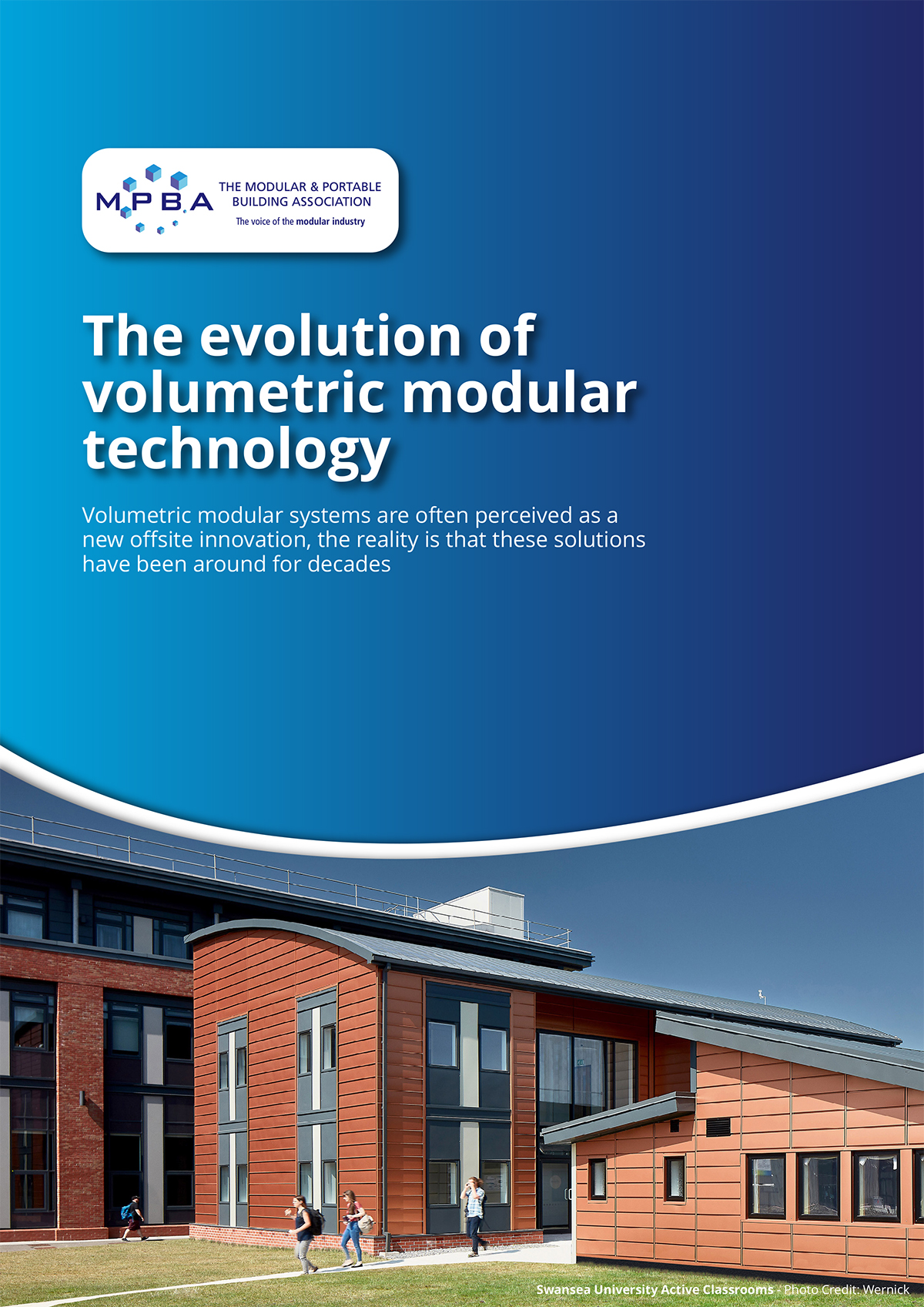In this ebook, Jackie Maginnis, chief executive of the Modular & Portable Buildings Association, discusses the evolution of volumetric modular technology from its inception to the advanced systems that are proving increasingly popular today
Modular construction is not a new concept – a shortage of skilled labour and building materials post-WWI fuelled a drive towards prefabrication in order to supplement traditional building methods, while pioneering volumetric units during the 1940s led to steel, timber and concrete framed systems being developed into the 1980s and beyond.
Offsite construction has continued to embrace high levels of technology, blurring the lines between manufacturing, engineering and construction, while changes to the Building Regulations have introduced tougher standards for thermal, acoustic and safety performance.
Today’s factory-manufactured units undergo stringent quality control processes, in controlled environments where disruption from the weather isn’t an issue, guaranteeing efficiency. Meanwhile, site works can be completed simultaneously, reducing labour costs and build times.
Materials can be selected for performance and sustainability, and waste is recycled for future projects wherever possible.
Modular approaches are now revolutionising construction, proving quick and easy to plan, budget and install.
Portable buildings
But not only is volumetric modular construction evolving, so too are the variety of uses of portable buildings. Today, they are used for everything from shops and offices to Covid-19 testing centres, sleeper units for care homes and additional classrooms for schools.
Indeed, there is currently an unprecedented demand for portable buildings and they have played a key role in providing additional facilities during the pandemic.
Volumetric modular technology and portable buildings are now firmly established within the construction industry for offering a range of benefits, from greener, healthier environments to maximised sustainability, reduced costs and rapid build times.



